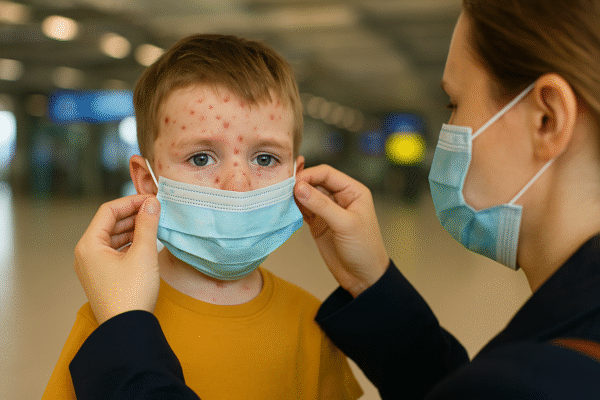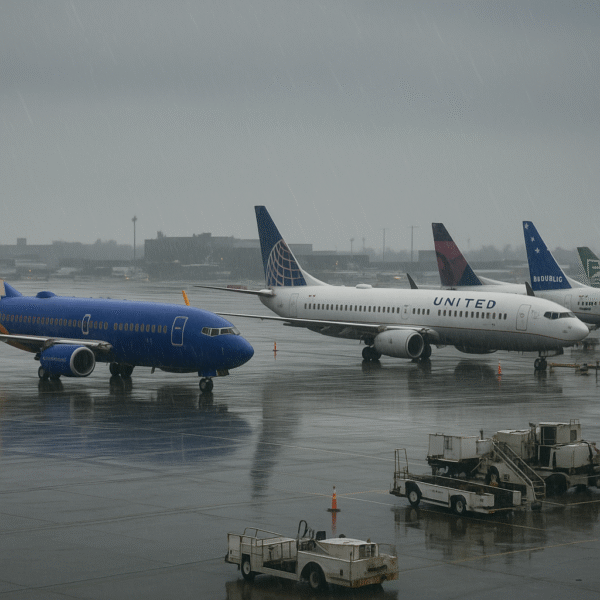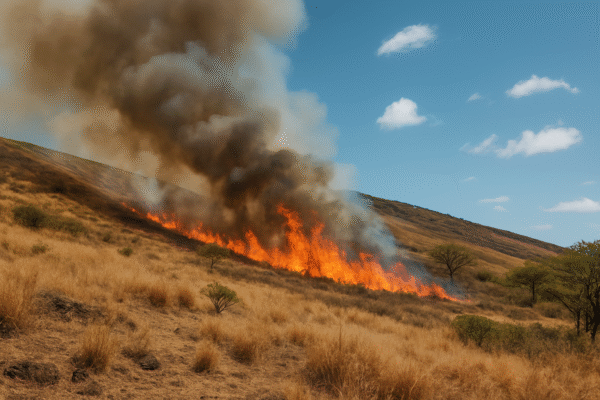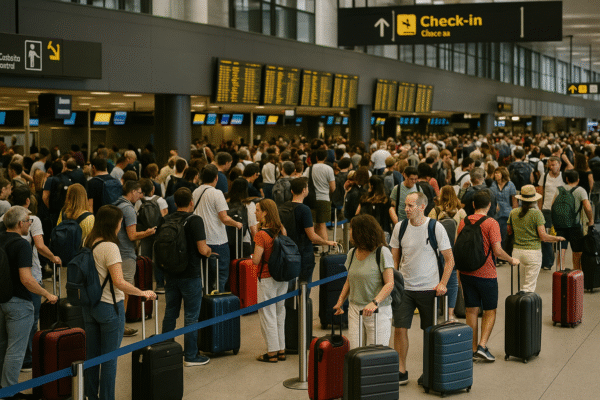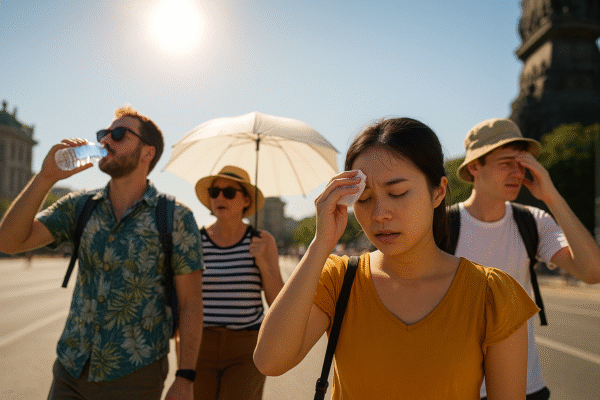As scorching summer temperatures sweep across the Northern Hemisphere, tourists and residents in countries including South Korea, Spain, Italy, France, Greece, Turkey, Portugal, and the United States are battling severe heatwaves. With thermometers climbing above seasonal norms in many of the world’s most popular travel destinations, travelers are urged to take safety precautions as extreme heat poses health risks and disrupts typical travel experiences.
South Korea Braces for Intense Weekend Heat
The Korea Meteorological Administration has issued heat alerts across multiple provinces, forecasting daytime highs of 38°C in Seoul—well above the city’s summer average. Heat indices, which factor in humidity, are expected to exceed 35°C nationwide, creating discomfort and increasing the likelihood of heat-related illnesses.
Other urban centers like Daejeon, Gwangju, and Daegu are also sweltering, with temperatures ranging between 35°C and 37°C. While Jeju Island may experience scattered showers, mainland Korea remains under sunny skies, offering little respite from the heat.
Korean authorities are encouraging people to limit outdoor exposure during peak sun hours (12 PM to 4 PM) and take full advantage of indoor attractions. Air-conditioned destinations such as the National Museum of Korea, COEX Mall, and Lotte World Aquarium provide both cultural enrichment and climate relief.
How Korea’s Heatwave Affects Travel and Tourism
For tourists visiting iconic landmarks like Gyeongbokgung Palace, Bukchon Hanok Village, or Namsan Seoul Tower, early mornings and late evenings are now the best times for exploration. Travel advisories suggest carrying a refillable water bottle, applying sunscreen frequently, and wearing UV-protective clothing and wide-brimmed hats. In Busan, Korea’s coastal jewel, travelers should anticipate crowds as locals head to beaches seeking cooler breezes.
Business travelers should plan meetings in shaded or indoor venues and dress in lightweight fabrics. Hydration stations, shaded rest areas, and adjusted schedules are now common at conferences and industry events.
Tourism Heat Crisis Spreads to Europe and the U.S.
South Korea is far from alone. Across Europe and North America, heatwaves are similarly disrupting summer travel:
Spain
- Cities Affected: Madrid, Seville, Valencia
- Temperatures: Up to 42°C
- Impact: Severe drought, wildfire risks, and public health warnings issued in Andalusia and other southern provinces.
- Travel Tip: Tourists should monitor wildfire alerts and avoid hiking or camping in dry forested areas.
Italy
- Cities Affected: Rome, Florence, Naples
- Temperatures: 39°C
- Impact: Public transportation delays, heat exhaustion cases, and altered hours at outdoor landmarks like the Colosseum.
- Travel Tip: Use city water fountains (like Rome’s “nasoni”) to stay cool while walking.
France
- Cities Affected: Paris, Lyon, Marseille
- Temperatures: 37–40°C
- Impact: Emergency health alerts and temporary closures of some public parks during midday.
- Travel Tip: Explore indoor destinations such as the Louvre Museum or Palais Garnier opera house.
Greece and Turkey
- Cities Affected: Athens, Istanbul, Izmir
- Temperatures: 38–41°C
- Impact: Tourists crowd beaches and air-conditioned shopping centers; high wildfire risk in dry coastal zones.
- Travel Tip: Check ferry delays and coastal fire advisories on official tourism websites.
United States
- Cities Affected: Phoenix (AZ), Las Vegas (NV), Dallas (TX)
- Temperatures: 40–45°C
- Impact: Heat advisories in effect across the Southwest; high energy consumption causing power strain.
- Travel Tip: Avoid strenuous hikes in national parks like Grand Canyon or Zion during peak hours.
Portugal
- Cities Affected: Lisbon, Porto
- Temperatures: 38–40°C
- Impact: Health services on high alert, especially for the elderly and children.
- Travel Tip: Use Portugal’s “cool routes” maps available via regional tourism boards, highlighting shaded streets and water access points.
Global Comparisons: South Korea vs. Western Heatwaves
While countries like Spain and the U.S. are recording higher maximums—some over 45°C—South Korea’s high humidity levels result in oppressive heat indices that feel just as unbearable. Unlike the dry heat in Arizona or Andalusia, Korea’s tropical-style weather raises the danger of heatstroke, fatigue, and dehydration, especially for tourists unfamiliar with the climate.
Safety Tips for Traveling During Heatwaves
Governments and tourism boards worldwide emphasize similar advice:
- Hydrate Frequently: Carry a water bottle and sip throughout the day.
- Dress Smart: Wear light-colored, breathable fabrics and protective hats.
- Avoid Midday Sun: Plan outings before 11 AM or after 5 PM.
- Rest Indoors: Use museums, malls, and cafés to cool off regularly.
- Know Emergency Numbers: In Korea, dial 119 for medical emergencies.
What Lies Ahead?
The Korea Meteorological Administration predicts high heat will persist through the weekend and into next week. Meanwhile, climate change is intensifying the frequency and scale of such extreme weather globally. According to the World Meteorological Organization (WMO), 2024 and 2025 are expected to be among the hottest years on record, with increasing risk for travelers and residents alike.
Final Thoughts
Whether you’re walking through Seoul’s royal palaces or planning a wine tour through Portugal’s Douro Valley, extreme summer heat is now a major travel consideration. By staying alert, dressing appropriately, and adjusting plans, tourists can still enjoy their summer vacations while protecting their health and well-being.
For updated weather alerts and travel safety tips, visitors are encouraged to consult official sources such as the Korea Meteorological Administration, European Climate Services, and U.S. National Weather Service before heading out.
For more travel news like this, keep reading Global Travel Wire




